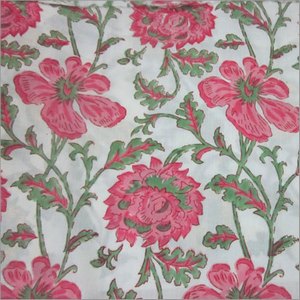Pigment Printing of Cotton Fabric
Compositions of pigment printing paste besides the pigment, the pigment printing paste contains a binder for fixation of the pigment, a suitable thickening agent to facilitate the printing process cross-linking agents to improve fastness properties, catalysts to accelerate the cross-linking of the binder, softening agents to improve the handle of the fabric, auxiliaries to prevent formation of rust and drying out of the printing paste and dispersing agents to stabilize the pigment emulsion and binder dispersion. In this article, we explain Pigment Printing of Cotton Fabric in detail.
Pigments are supplied as dispersion called emulsion or pigment paste containing surface active agents to keep them in staple dispersion. The binder is the most important ingredient in the printing paste. It is a film-forming material of high molecular weight. A thickener used must have no effect on the handle of the fabric and it must be removed easily after curing.

A dispersion of one liquor into another in which it is immiscible. There are two types of emulsion viz water-in-oil (w/o) and oil-in-water (o/w) type, in system containing 25% water usually from 2/o type of emulsion where as these as containing 31% water from o/w emulsion.
Catalysts are acid liberating suite to accelerate the cross linking of binder and to facilitate the reaction between the binder and the substrate. Diammonium phosphate is the most commonly used catalyst.
Dimethly urea and dimethylol urea are examples of cross linking agents, which are not self reacting.
Dispersing agents and polyalcohols are usually incorporated in the paste to stabilize the emulsion and prevent it from drying.
The Pigment Printing Process of Cotton Fabric
The sequence is PRINT-DRY-CURE. In this process a binder emulsion (usually 20%) is first prepared and is mixed with pigment dispersion; this paste is used then for printing.
Preparation of Binder Emulsion:
- 200 parts ………Aramine SLN Binder
- 5 parts …………Emulsifier
- 50 parts ………..Urea (Hygroscopic agent)
- 30 parts ………..Diammonium phosphate(1:3) (Acid liberating agent) (Catalyst)
- 50 parts ………..Water
- 665 parts ………Kerosene mixed under high-speed stirrer
- 1000 parts ……..(Total)
Printing Recipe Preparation:
- 50 parts ………..Acramine pigment (Dispersion)
- 40 parts ………..Binder emulsion
- 10 parts ………..Fixer CCL
- 100 parts ………(Total)
The Binder content can be increased if required. The fabric is printed with the above recipe suitable method (screen, roller or rotary screen) and it is dried at 90oC to 100oC until free from kerosene and then curing chamber at 140oC for 5 minutes.
Sequence of Pigment Printing:
Pigment printing is carried out as the following way.
Fabric Pre-treatment
↓
Table Preparation
↓
Fabric placed on the table
↓
Pigment printing paste apply with the help of a screen
↓
Curing at 160ºc (belt speed 6.50 m/min)
↓
Delivery
The advantages of using pigments in printing are as follows:
- Application to all kinds of fibers especially to fiber mixtures and blends.
- High production of prints due to elimination of after treatment.
- A greater degree of certainty as regards color matching.
- High fastness properties
- Non-staining of white ground
- Availability of a complete range of colors.
The disadvantages of pigment printing are the use of costly and hazardous kerosene and the lack of fastness to rubbing and dry-cleaning. The present trend, however, is to replace partially or fully kerosene is the print by the use of monomer products of synthetic origin such as acrylic thickeners.
- You may love to read: Types of Screen Printing, and Its Use
- Block Printing in Textile Industry: Types, Methods, and Advantages
- Common Printing Defects in Fabric | Causes and Remedies
- Digital Printing on Fabric: Digital Printing Process Step By Step
